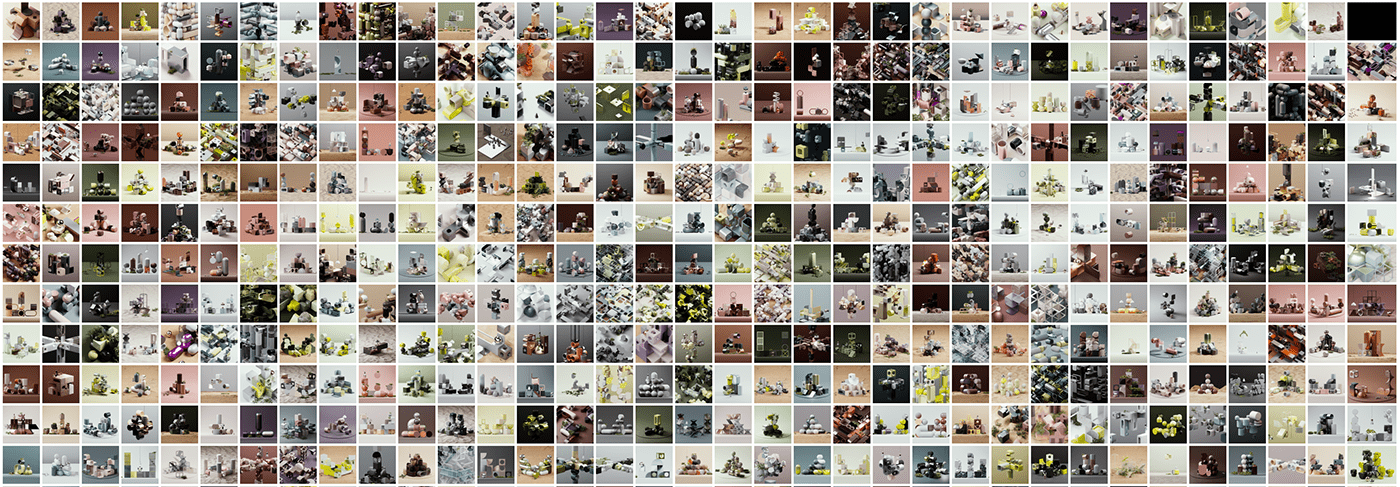
Rachael is the world’s first fully automated autonomous 3D design influencer on Instagram. Built with Unreal Engine 4, her capabilities are specially designed to create “likeable” images representing popular visual languages on the platform. Since May 2020, she has been posting to the Instagram account @rachaellic one new image per day. She will continue posting without any human intervention, as long as the computer she is running on is online.
Rachael is not only a technical demonstration of the capabilities of real-time rendering, automation, and AI. Rachael intents to critically examine the consumption of contemporary imagery in the fast-paced social media landscape. Due to the continuously growing speed of how images are consumed on Instagram, the more successful (liked) images are the ones displaying an immediate, visually pleasing impression. On the contrary, images embodying deeper meanings or more complex ideas fail to be as popular, since they require more time to be seen and understood.












With the immense advancements in machine learning and AI, it is only a question of time when the creation of visually pleasing images can be fully automated. If we neglect the communication aspect of visuals and simply use design techniques to attract likes, we as human designers risk becoming obsolete in the near future. Therefore, designers' priority should always remain finding smart conceptual ways of communicating our message, while the visual expression is utterly the vehicle that delivers it. Automating the human skill of visual communication that requires creativity and conceptualization is a much harder task to accomplish by an artificial algorithm.
Rachael is a real-time software built with Unreal Engine 4 that generates images using various design methods and algorithmic techniques. The compositions are based on grid or dynamic systems and the placement of additional objects employs different techniques available in the engine (randomization, trace methods to assess surface areas and general spawning probabilities). The software is fully RTX enabled and runs in real-time — the images are saved on the fly after the generator has finished building the composition and uploaded via a custom python script.
Rachael is a real-time software built with Unreal Engine 4 that generates images using various design methods and algorithmic techniques. The compositions are based on grid or dynamic systems and the placement of additional objects employs different techniques available in the engine (randomization, trace methods to assess surface areas and general spawning probabilities). The software is fully RTX enabled and runs in real-time — the images are saved on the fly after the generator has finished building the composition and uploaded via a custom python script.








Unreal Engine 4 and the introduction of real-time raytracing has enabled the platform to render near-photoreal CG imagery to a visual standard that comes close to the output of traditional pathtracers. All this happens in real-time with almost no latency between creation and outcome. Besides the immense improvements in visual quality and speed, game engines such as Unreal open up a whole new medium for 3D designers to explore.
Rachael is part of the ongoing research project loadandland (www.loadandland.com) and therefore a continuation of the exploration of alternative usages of game engines. loadandland explores design concepts using real-time rendering, data and interactivity. It strives to create a new approach to how we use and consume computer-generated imagery.



Due to its algorithmic nature, Rachael can generate an infinite number of images, each with a unique combination of shapes and colours. The image creation is primarily controlled by a weighted randomization of different parameters. The software contains a wide collection of objects that the algorithm can choose from, including different environments and lighting setups. Rachael also uses Quixel Megascans assets for multiple props and shaders.
Besides Rachael’s core software even the process of uploading and posting is fully automated. The software generates a description for each image based on the selected shape and colour palette. A custom python-script posts it instantly to Instagram using a chance selection of tags. The post of a new image happens on a randomly selected time every day.
Rachael continues posting daily creations to the Instagram account @rachaellic.
Make sure to follow to see more images in the future!
Make sure to follow to see more images in the future!



